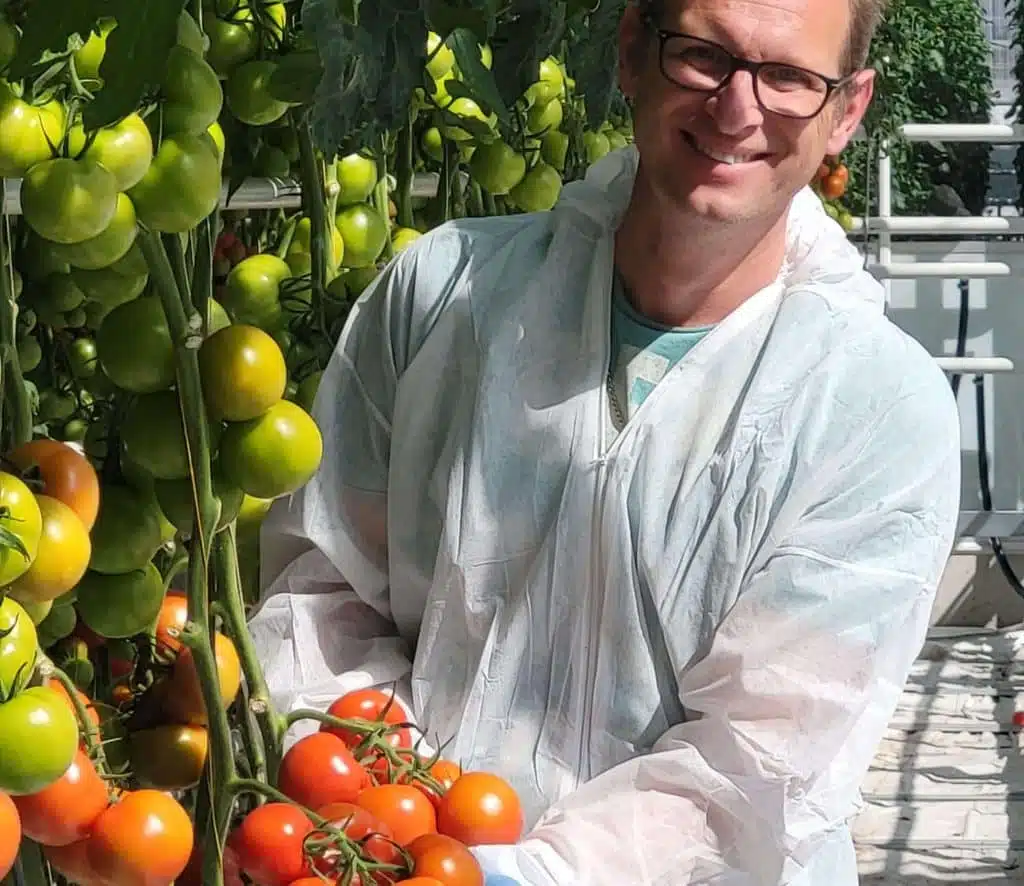Blotchy ripening
Blotchy ripening refers to parts of the fruit surface that do not turn uniform red or green during ripening. In the trials performed by the PROOF research team, less discoloration was seen on the fruits as a result of the vertical ventilation pattern of the LED lamp.
Researcher Ary de Jong explains: “The standard response when blotches are seen is to increase the temperature in the greenhouse. But our research investigated factors other than using the pipe-rail heating.” According to this experienced grower, a pipe-rail temperature of 55°C will not always deliver the intended result. “In this trial, we could use the screens for longer because the vertical fan enabled us to mix the greenhouse air with the convection heat. What we actually did was rotate the air vertically through the greenhouse, which had the effect of dehumidifying and creating more activity in the head of the plant.”
Convection heat
“The fan cools the lamp and blows the warm air into the crop, so the plant is warmer than under regular LED grow lights. The warm air ensures a good moisture uptake in the crop” explains Ary de Jong of HortiTech. He ran the trial on behalf of Climalux, together with his colleague Elke van der Stok.
During the trial, large vine tomatoes were grown under CLX-2 grow lights, a one for one substitution for HPS lights. A well-known variety was selected for the trial, with plenty of existing performance data. “The experience of growers producing tomatoes under full HPS lights is a water uptake of 2.2 litres/m² per day during the dark winter months. With full LED lighting, this is around 1.8 litres/m². With a higher energy input, a grower using a full-LED system often reaches 2.0 litres/m². And that is less” emphasises Ary. “And the market believes this may be one of the solutions to the current quality issues.”
